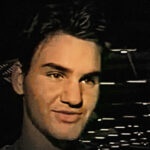Eye of the Coach #66: “Nobody has ever played tennis like Roger Federer, nobody ever will again”
In the latest episode of Eye of the Coach, Patrick Mouratoglou breaks down Roger Federer’s inimitable style and the characteristics that allowed him to cash in on his legendary talents.
On Thursday September 15, Roger Federer announced his plans to retire at next week’s Laver Cup in London, ending a 24-year career that featured 103 ATP titles, including 20 Grand Slams, as well as 310 weeks at No 1, 237 of which came in succession.
41-year-old Federer is universally adored and has managed to transcend the sport like no other player over the course of his career.
In the latest episode of The Eye of the Coach, Patrick Mouratoglou explains what makes Federer so special, and why no other player will be able to replicate his style and fluid brand of athleticism.
He also explains two characteristics that set Federer apart and enabled him to make the most of his natural talents.
Key Moments:
:01 – Mouratoglou expresses his admiration for Federer’s game: “I think Roger is the best ambassador for the game, because he plays tennis the way everybody would love to play tennis,” the coach says. “Nobody has ever played tennis like Roger, and nobody will ever play tennis like Roger – it’s impossible because it is just too perfect to be matched.”
:20 – Federer’s ease of movement and grace made tennis look easy, says the coach: “He is the absolute perfection in everything he is doing – the way he moves, the way he hits the ball, because he was giving the feeling all the time that he was hitting the ball with absolutely zero effort. Everything is fluid, easy.”
:28 – An overlooked element of Roger Federer’s game? The toughness, both mental and physical: “I always said his biggest quality is that he’s a fighter, but it doesn’t look like it because it looks easy,” Mouratoglou says. “And the second [quality] is the work because he is an incredibly hard worker.”
:51 – Federer as player, Federer as artist… “Having this gift and this fluidity, he made it become more than a talent, he made it an art,” Mouratoglou says. “When Roger came to the game, he could do anything, but he didn’t have a real identity.”
1:03 – Mouratoglou also marvels at Federer’s adaptability, explaining how the Swiss came up as an attacking, serve-and-volley player, but changed his style as the demands of the surfaces in play on tour changed: “He started to play serve and volley. And he played the first Wimbledon, when he beat Sampras, he was playing serve-and-volley,” Mouratoglou says. “But they slowed down the surface, and because he had other options in his game he started to work to become more of a baseline player.
“Taking the ball very early, spending a lot of time inside the court and finishing the points at the net, and that became his style – with an incredible forehand, with an incredible slice backhand.”
1:36 – And don’t forget about the movement, says Mouratoglou, especially Federer’s ability to move from the backcourt to the midcourt in a blink: “He developed probably the best ever north to south movement, seeing early and jumping inside the court to take the ball very early – he was the best.”
2:03 – Mouratoglou adds that Federer made the perfect transition from a twenty something to thirty something: “He had a career in which he adapted always to the conditions of play, and also his own conditions, getting older and not being able to play longer rallies.”












